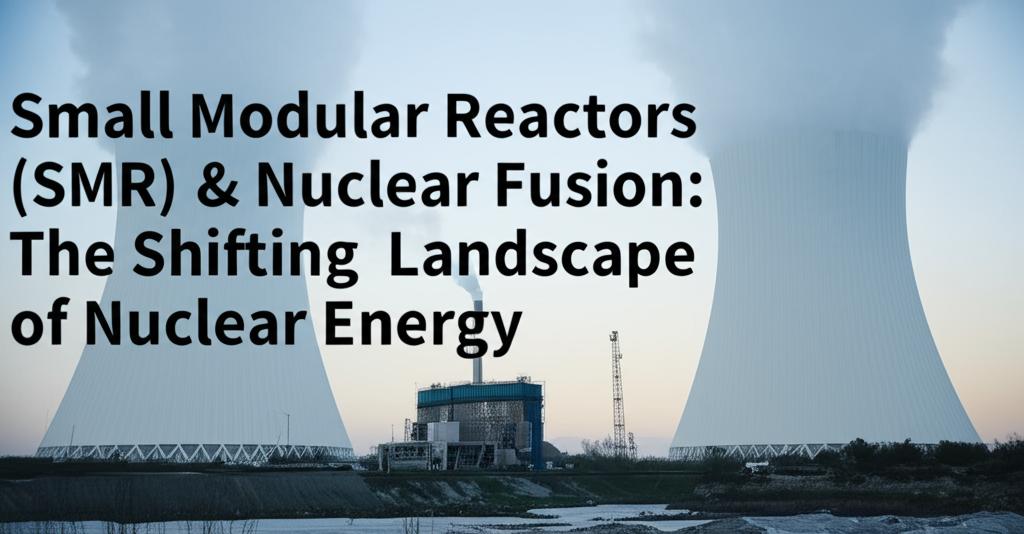The landscape of nuclear energy is undergoing a significant transformation, driven by the pursuit of cleaner, safer, and more flexible power generation. Two key technologies at the forefront of this evolution are Small Modular Reactors (SMRs) and nuclear fusion. While both hold the promise of a lower-carbon energy future, they represent distinct approaches with unique advantages and challenges.
Small Modular Reactors: A Near-Term EvolutionSMRs are generally defined as nuclear reactors with an electrical output of 300 MWe or less, featuring modular designs that allow for factory fabrication and scalable deployment. This approach offers several potential benefits over traditional large-scale nuclear power plants, including:
- Enhanced Safety: Many SMR designs incorporate passive safety systems that rely on natural physical processes like gravity and natural circulation to cool the reactor, even in accident scenarios, reducing the need for operator intervention.
- Flexibility and Scalability: Their smaller size and modularity allow SMRs to be deployed in a wider range of locations, including remote areas or those with less developed grid infrastructure. Capacity can be added incrementally to match growing energy demand.
- Cost and Construction Efficiency: Factory manufacturing of components can lead to standardized designs, potentially reducing construction times and overall project costs through economies of series. However, the economic competitiveness of SMRs at scale is yet to be fully demonstrated in practice.
- Diverse Applications: Beyond electricity generation, SMRs can be used for industrial process heat, desalination, district heating, and hydrogen production.
Despite their promise, SMRs face challenges. Regulatory frameworks are still adapting to these novel designs, potentially leading to lengthy and unpredictable licensing processes. Public perception, often shaped by the legacy of traditional nuclear power, remains a hurdle. Ensuring a robust supply chain and achieving cost-competitiveness with other energy sources, including large reactors and renewables, are also critical for widespread deployment.
Globally, SMR development is progressing, with numerous designs in various stages. Countries like the United States, Russia, China, Canada, and the United Kingdom are actively pursuing SMR technologies. Some SMRs are already in operation, like Russia's Akademik Lomonosov floating nuclear power plant and China's HTR-PM. Many anticipate the first wave of broader SMR deployment around 2030-2035. The global market for SMRs is projected to grow significantly in the coming decades.
Nuclear Fusion: A Long-Term Game Changer?Nuclear fusion, the process that powers the sun, involves fusing light atomic nuclei (typically isotopes of hydrogen like deuterium and tritium) to release immense amounts of energy. Unlike nuclear fission (the process used in current nuclear power plants and SMRs), fusion offers the potential for:
- Abundant Fuel: Deuterium can be extracted from seawater, and tritium can be produced from lithium, offering a virtually inexhaustible fuel supply.
- Inherent Safety: A runaway chain reaction is not possible in a fusion reactor. The process requires such precise and extreme conditions that any malfunction would cause the reaction to stop.
- Reduced Long-Lived Radioactive Waste: While fusion reactors will produce some radioactive materials from the activation of components, the waste will generally have a much shorter half-life compared to the long-lived waste from fission reactors.
- No Greenhouse Gas Emissions: Like fission, fusion produces energy without releasing greenhouse gases.
However, achieving controlled, sustained nuclear fusion on Earth presents immense scientific and engineering challenges. The primary hurdle is creating and confining a plasma at temperatures many times hotter than the sun (around 100 million degrees Celsius or more) and maintaining it long enough for net energy gain – where more energy is produced by the fusion reaction than is required to initiate and sustain it.
Significant progress is being made in fusion research globally. Large international collaborations like ITER (International Thermonuclear Experimental Reactor) in France aim to demonstrate the scientific and technological feasibility of fusion power. Recent breakthroughs, such as achieving net energy gain in experiments at the US National Ignition Facility (NIF), have generated considerable optimism. Additionally, private investment in fusion technology has surged, with numerous companies pursuing various approaches to fusion energy.
Despite these advancements, commercial fusion power plants are still considered to be decades away. Overcoming challenges related to materials science (developing materials that can withstand extreme temperatures and neutron bombardment), plasma control, and tritium breeding are crucial steps on the path to commercialization. Some optimistic projections suggest compact nuclear fusion reactors might begin delivering commercial power as early as the 2030s, though many experts anticipate a timeline closer to the latter half of the century.
A Shifting LandscapeBoth SMRs and nuclear fusion are reshaping the future of nuclear energy. SMRs represent an nearer-term evolution of established fission technology, offering a more flexible and potentially more economical way to deploy nuclear power for a variety of applications. They are poised to play a role in decarbonization efforts in the coming decades.
Nuclear fusion, on the other hand, promises a revolutionary long-term solution with significant environmental and fuel availability advantages. While the path to commercial fusion is longer and more uncertain, continued research and recent breakthroughs are paving the way for what could be a transformative energy source for future generations.
The shifting landscape of nuclear energy indicates a move towards a more diverse portfolio of nuclear technologies. SMRs offer an incremental but significant step towards cleaner and more adaptable energy systems in the near future, while the pursuit of fusion energy represents a longer-term ambition with the potential to fundamentally change the global energy paradigm.

